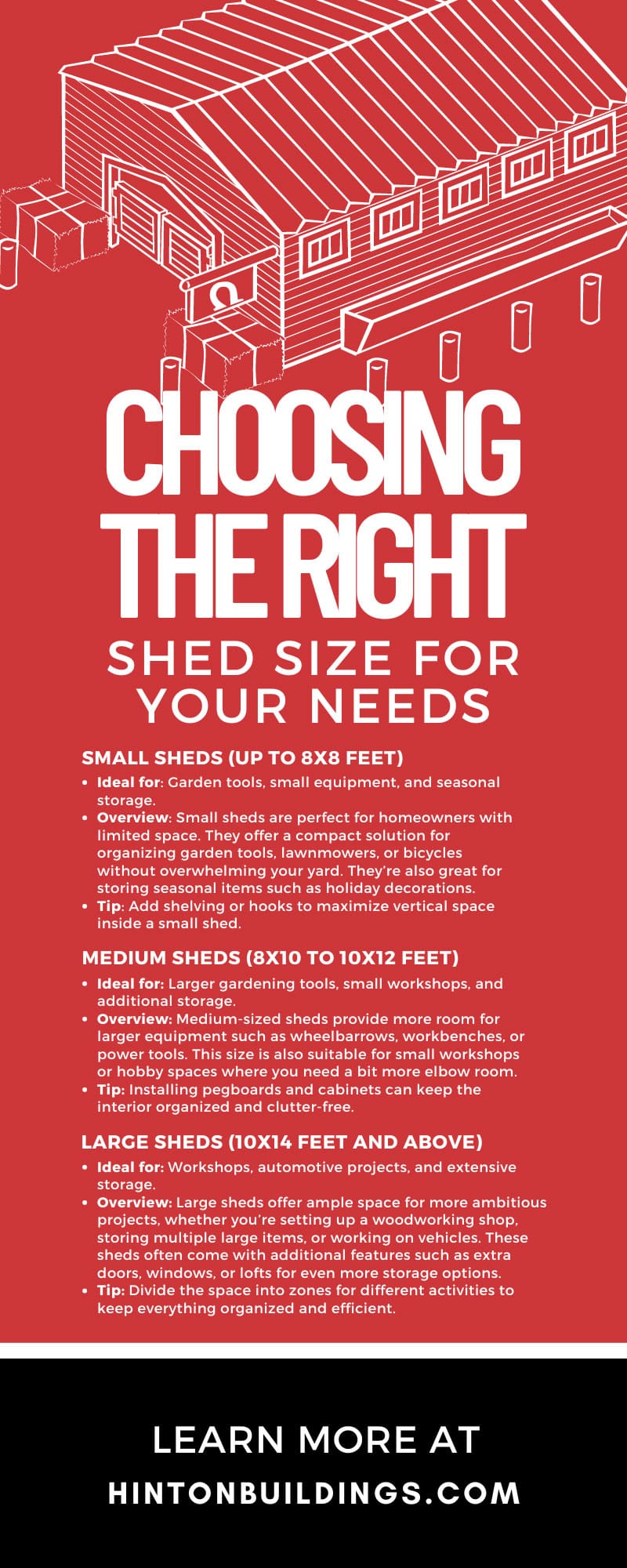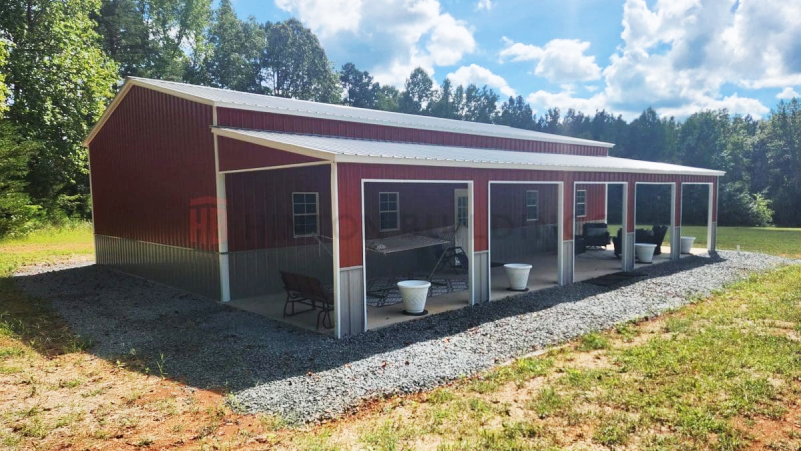

A shed offers many advantages, but with so many options available, selecting the right size can be daunting. No matter what it’s for, finding one that fits with your expectations and budget is crucial. With these tips, choosing the right shed size for your needs should be easy, allowing you to take advantage of the extra storage right away.
Take a good look at your yard or property before deciding on a shed. Measure the available space where you plan to place it. Remember to factor in clearance for doors, windows, and any potential walkways around the shed. Mapping out your space will help you visualize the shed’s footprint and avoid any surprises during installation.
Different needs call for different shed sizes. Are you storing garden tools, housing a workshop, or creating a haven for your car? Clearly defining your shed’s primary purpose will help you determine the size and features you need. For instance, a small garden shed might suffice for tools, while a larger shed might be necessary for a workshop or automotive projects.
While you may have a specific purpose in mind now, consider how your needs might evolve. Will you require additional storage space for new gardening equipment or foresee expanding your workshop? Planning for future growth can save you from upgrading or replacing your shed sooner than expected.
Choosing the right size for your shed is essential for maximizing functionality and efficiency. Here are a few common options:
Ultimately, selecting a size that aligns with your current and future needs optimizes your storage and contributes to your outdoor space’s overall enjoyment and utility.
A well-lit shed can significantly enhance functionality, especially when working inside. Maximize natural light by adding windows or skylights and installing overhead LED lights or task lighting to ensure ample illumination for any task, day or night.
Incorporating multi-functional furniture, such as workbenches with built-in storage or foldable tables, can help you make the most of your shed’s space. These pieces provide additional storage, and you can easily move or adjust them to suit your needs.
Depending on the climate in your area, adjusting the temperature and humidity inside your shed may be necessary for your tools and projects. Consider insulation, windows, or even small heaters and fans to create a comfortable working environment year-round.
Your shed installation choice can significantly impact its longevity, functionality, and appearance.
Weighing the benefits and drawbacks of each option is critical to ensuring your shed stands the test of time while meeting your storage and workspace needs effectively.
Regularly inspect your shed to identify any signs of wear, damage, or pests. Look for leaks, cracks, or other issues that could compromise its structure or contents. Promptly addressing these problems can prevent more extensive damage and prolong your shed’s life.
Keep your shed clean and organized to maintain its functionality and appearance. Regularly sweep out dirt and debris and periodically reorganize the contents to ensure everything is in its proper place. This task prevents clutter and makes it easier to find items when you need them.
Applying weatherproofing treatments to your shed’s exterior is a great way to keep out the elements. Weatherproofing includes sealing any gaps or cracks, applying weather-resistant paint or stain, and keeping the roof in good condition. Proper weatherproofing prevents water damage, mold, and other issues caused by exposure to the elements.
Choosing the right shed size for your needs is crucial in ensuring your shed enhances your property. Follow these tips to select a shed that fits perfectly into your lifestyle.
Ready to get started on your shed project? Hinton Buildings has the best build for you, whether you need something large and multi-functional or small and efficient. Old Hickory Storage Buildings are perfect for anyone wanting to add a touch of rustic charm to their home or property.


Copyrights © 2025 Hinton Buildings